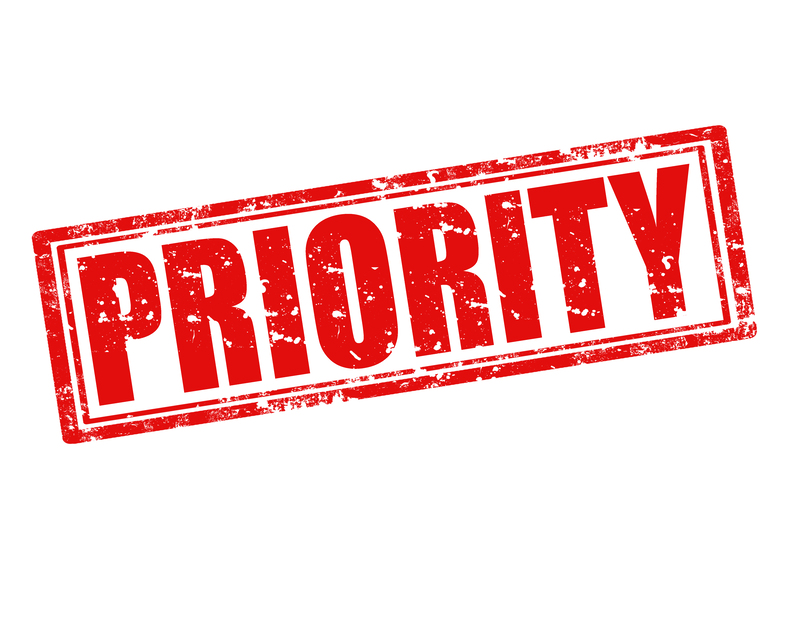Ultimate Guide: Navigating Staircases and Tight Spaces While Moving a Piano
Moving a piano is no easy task. Among the hardest parts are navigating staircases and tight spaces while moving a piano. Pianos are heavy, awkwardly shaped, and often delicate, requiring both muscle and finesse. This comprehensive guide explores essential steps, expert tips, and crucial safety information to ensure your piano reaches its new home damage-free. Whether you're a professional mover or a cautious piano owner, these insights will make your move smoother and safer.

Why Is Moving a Piano So Challenging?
Pianos are among the most complex items you might need to move. Their size, weight (ranging from 300 lbs. for uprights to over 1,200 lbs. for grand pianos), and internal mechanics make them especially vulnerable during relocation. Navigating staircases and tight spots increases the risk for damage to the piano and, equally important, for personal injury.
- Irregular Shape: Most pianos aren't easy to grip or hold securely.
- Weight Distribution: Their massive weight often sits in the bottom half, making them top-heavy and tricky on stairs.
- Delicate Components: Each piano contains thousands of moving parts that can easily be jostled out of alignment.
- Limited Visibility: Tight spaces can impair your view, increasing the risk of bumps and scrapes.
Preparation: Assessing and Planning Your Piano Move
Before attempting to move a piano through staircases and narrow hallways, meticulous preparation is crucial. Skipping these steps risks costly damage and possible injuries.
1. Measure Everything (And Then Measure Again)
- Measure the piano's height, width, and depth. Note leg clearance if it has removable parts.
- Measure doorways, stairwell width, turns, and ceiling height along the entire path.
- Check for tricky obstacles like light fixtures, fire sprinklers, or protruding moldings.
2. Analyze the Staircase & Tight Spaces
- Is the staircase straight or does it involve turns?
- Is there a landing large enough for the piano?
- How tight are the corners?
- What is the banister or handrail height (potential limitations)?
- Is the staircase steep, carpeted, or slippery?
3. Create a Move Plan
- Assign clear roles to every helper.
- Identify stopping points and rest positions on the staircase.
- Plan for how to pivot around tight corners or door frames.
- Establish a communication system: Call out when lifting, moving, or setting down.
Essential Equipment for Moving a Piano in Tight Spaces
Having the right tools is critical to successfully maneuvering staircases and tight quarters when moving a piano. Here's what you'll need:
- Piano board or skid board: Specially designed for grand and baby grand pianos.
- Moving straps: Vital for controlling weight and stabilizing the load.
- Heavy-duty dolly: Sturdy enough for your piano's weight and for stair navigation.
- Moving blankets and padding: To protect both the piano and walls.
- Non-slip gloves: For extra grip.
- Ramp (if available): For small sets of stairs or entryways.
- Tape and shrink wrap: To secure padding and loose parts (like lids and pedals).
- Wrench or screwdriver: For detaching legs or music stands when needed.
Step-by-Step Guide to Navigating Staircases and Tight Spaces While Moving a Piano
1. Prepare the Piano
- Close and secure the keyboard lid. Wrap tightly, using tape or bungee cords (without taping the piano finish directly).
- Remove detachable parts like legs, pedals, or music stands from grand pianos.
- Wrap the entire piano in moving blankets or padding. Secure gently but firmly.
2. Secure Helpers
- Plan for 3-5 strong helpers. More for grand pianos or complicated staircases.
- Review the move path, highlighting tricky spots and safe rest points.
- Assign roles: The leader (usually at the lower end on stairs), spotters, and those managing turns or corners.
3. Role of Communication
- Use one-word signals for "Stop," "Go," "Lower," and "Pivot".
- Check-in frequently to avoid missteps during tense moments.
4. Lifting Techniques
- Bend at the knees, not your back.
- Lift slowly on a count, keeping the piano level to avoid tipping.
- Maintain a steady grip using moving straps.
- Never position someone below a heavy load on stairs.
5. Navigating the Staircase
- Keep the piano vertical and balanced, using a dolly if possible.
- For upright pianos, two helpers should hold the bottom while one or two stabilize the top.
- For grand pianos, carefully angle the instrument and pivot on the skid board, adjusting grips as you descend or ascend each step.
- Set the piano down carefully at each landing or rest break.
- Watch for tight turns--move slowly and angle the piano as necessary.
6. Passing Through Tight Spaces
- Pre-measure to ensure clearance on both sides and overhead.
- Slide using furniture sliders or moving blankets to avoid scratching floors.
- If needed, tilt the piano slightly (with extreme caution and never more than necessary) to clear obstacles.
- Protect door jambs and walls with padding or wrapped towels.
Expert Tips for Moving a Piano Around Corners and Difficult Hallways
- Remove doors from hinges for extra space.
- If the angle is too tight, try standing the piano upright or laying it on its largest side (grand pianos with the keyboard facing up and stabilized).
- Discourage sudden movements--small, incremental shifts are best.
- Have one person guide from the front, watching for corners or surprises.
- Never force the piano through a space where it is clearly too tight.
What to Do When You're Stuck?
- Set the piano down safely and re-evaluate the path.
- Double-check measurements--you may need to remove additional doors or molding.
- Consider whether disassembly (removing more parts) will help.
- If all else fails, consult a reputable piano moving specialist for advice.
Common Mistakes to Avoid When Moving a Piano on Stairs or Through Narrow Spaces
- Underestimating the weight and balance of the piano, leading to sudden shifts or tipping.
- Lifting with your back instead of your legs.
- Lack of communication among helpers, resulting in accidental bumps or dropped loads.
- Not removing obstacles ahead of time - shoes, area rugs, children's toys in the way.
- Rushing through the process out of frustration or fatigue.
- Ignoring the importance of using proper moving equipment.
Safety Tips for Navigating Staircases and Tight Spaces During a Piano Move
- Never rush, especially on stairs.
- Keep all hands and fingers away from pinch points between the piano and walls.
- Wear sturdy shoes with good grip, and gloves for better control.
- Secure doorways open to prevent swinging into movers or the piano.
- Take breaks to avoid exhaustion, especially on long, winding staircases.
- Always have a spotter on any staircase to warn of obstacles below or above.
- Use proper lifting techniques--keep your back straight and your core tight.
Hiring Professional Piano Movers vs. DIY Moving: What's Best?
While moving a piano yourself can save money, the risks are significant. Professionals have extensive experience navigating tight spaces and staircases while moving pianos. They also carry insurance for both the instrument and potential property damage.
- If your piano is an heirloom, a grand, or located above the ground floor, hiring experts is strongly recommended.
- For lightweight uprights and moves involving few stairs, experienced DIYers can attempt the move with the right tools and support.
- When in doubt, consult a piano moving specialist to avoid unnecessary risks.
Post-Move Steps: Caring for Your Piano After Navigating Tight Spaces
The challenge isn't over once your piano is safely in place. Your piano will need some attention after the move:
- Inspect for new scratches, dents, or mechanical issues.
- Let the piano acclimate to its new environment for at least 2-3 weeks before tuning, as temperature and humidity changes can affect its sound and mechanism.
- Retune and, if necessary, have a professional technician check internal parts.
- Keep the new space free of direct sunlight and excessive moisture.
Special Considerations: Apartments, High-Rises, and Unusual Spaces
- Ask building management about freight elevators and moving policies.
- Reserve loading docks or elevators in advance to avoid delays or surprises.
- Consider extra insurance for tight, high-value buildings.
- Notify neighbors in advance about move-in times to avoid inconvenience.

Frequently Asked Questions
Can you move a piano through small staircases or narrow doors?
With proper planning, the right equipment, and enough helpers, it's often possible to navigate staircases and tight spaces while moving a piano. For exceptionally tight fits, partial disassembly or professional movers may be required.
Which is harder: Going up or down stairs with a piano?
Both have their challenges. Downstairs risks uncontrolled momentum, while upstairs requires more physical effort. Secure footing and communication are vital in both directions.
What if my piano gets scratched or damaged?
Scratch repair for pianos can be handled by furniture restoration professionals. Internal damage (like to strings or pedals) may require a piano technician. Consider insurance when moving valuable instruments.
Conclusion: Succeeding at Navigating Staircases and Tight Spaces While Moving a Piano
Navigating staircases and tight spaces while moving a piano requires preparation, teamwork, and the proper gear. Every detail matters--from measuring and planning to careful lifting and communication. If you're unsure or face particularly tricky obstacles, don't hesitate to bring in expert piano movers. Proper planning protects both this cherished instrument and your well-being, letting you enjoy your piano safely in its new place for years to come.
- Preparation and right equipment are essential
- Never rush the process or risk your safety
- When in doubt, call professionals
- Post-move care ensures your piano remains in top shape
With these tips, navigating staircases and tight spaces during your next piano move can be stress-free and safe, helping your priceless instrument begin a new chapter in its new home.



